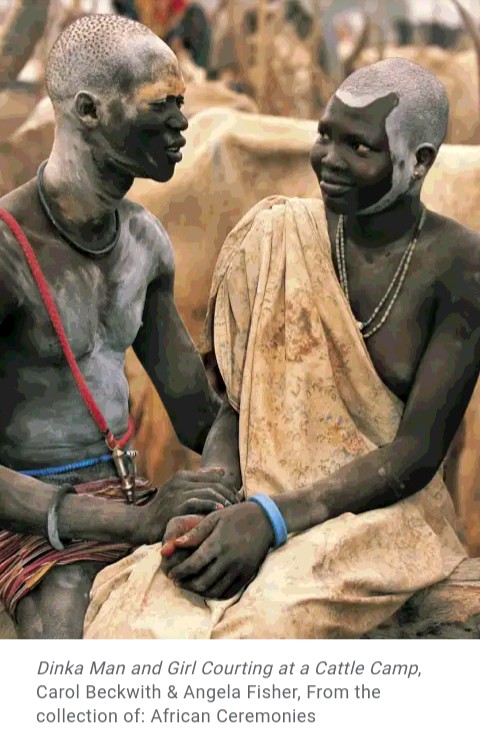Dinka: 10 astonishing facts about the “ghostly giants” of Africa

Remember that Game of Thrones scene when Jon Snow said “those are giants riding mammoths down there,” and Janos Slynt replied “there is no such things as giants, just stories for the children.”
Lord Slynt, meet the “ghostly giants” of Africa.
Here are 10 interesting facts you should Know about the Dinka tribes of South Sudan.

1. First of, you are mostly likely pronouncing the name of the tribe wrong, it is pronounced DEEN-kuh.
2. The Dinka are one of the largest ethnic groups in the Republic of Sudan. They belong to a group of cultures known as the Nilotic peoples, all of whom live in the southern Sudan.
In 1983, a civil war erupted in the Sudan, pitting the largely Arab and Muslim northern Sudan against the black African peoples of the south. Lasting into the 1990s, the war has had dire consequences for the Dinka and other Nilotic peoples. Tens of thousands of Dinka have died; countless others have become refugees. Rebel groups and international human rights organizations have accused the Sudanese government of attempting genocide against (extermination of) the Dinka.
3. The Dinka culture revolved around their cows. It is estimated that they have more than 400 words to refer to cattle alone—their movements, their diseases, and their variety in color and form.

4. Dinka herdsmen receive a bull when they come of age. They often give up their birth names and take the nickname of the cow, the beast is known as namesake ox. The herdsman identifies with the bull, emulating it to the point where he believes that he and the animal are one.

5. Dinka religion may be regarded as monotheistic (believing in one deity). Nhialic (creator) is thought to be the source of all life and death. Lesser manifestations of the creator’s power are honored by the Dinka through ritual sacrifices. Rituals are performed at births, deaths, to cure disease, and in times of crisis.
6. Beautifying with Ash
Ash from dung fire is used to beautify and protect the body. Covered with Ash, the Dinka, who are up to 7’6″ tall were referred to as “gentle giants” or “ghostly giants” by the early explorers.

7. FAMILY LIFE
Polygamy (multiple spouses) is common among the Dinka. Men of high social standing may have as many as fifty to one hundred wives. In polygamous marriages, wives cooperate in performing household duties, although each rears her own children. Much of Dinka public life is dominated by men. However, women play a significant and even powerful role in local life.
8. Tho the Dinka wear very little clothing and no shoes. Men go naked, and the women may wear goatskin skirts. Pregnancy out of wedlock is absolutely taboo and damages a girl’s prospect of finding a good husband.
9. Traditionally Dinka men marry at 30 years old and girls between 17 and 20 years old.

10. Dinka have traditionally produced all the material resources needed to sustain their livelihood via a combination of horticulture (gardening) with pastoralism (nomadic herding), fishing and occasional hunting. Millet is the mainstay of the Dinka diet. Depending on the season, it is supplemented with cow milk, fish, meat, beans, tomatoes, or rice.
